Hope through co-operation
Can beetle conservation make the world feel a little better? At the present time it’s not always easy to feel good about the world but hopefully this will help.
Last year, Forestry England told us they might have found a site for a trial introduction of scarlet malachite beetles. We have a good working relationship with Forestry England, mainly on ladybird spider conservation, but also any other species that may need our help. But it took presence of mind for one of their officers to wonder if a restored grassland they were visiting for other reasons, might suit this beetle.
The site is a confidential location on private land but appears ideal for our needs as it supports swathes of the beetle’s favourite food plants. This joint recognition of the importance of conserving this beleaguered beetle has led to a very welcome funding commitment from the ‘New Forest Biodiversity Forum – Small Grant Scheme’. This has helped us immensely and allows us to use our resources for other projects too.
The Life of the Scarlet Malachite Beetle
Scarlet malachite beetles are pretty little beings that were long known to entomologists as rarities that flew from flower to flower in summer meadows. On closer observation, we found, that they are loosely communal and, for courtship, the beetles prefer the flowering heads of grasses such as meadow foxtail and cocks-foot. If you want to learn about grasses then these are a great pair to start with. One is shaped like a fox’s tail and the other has 3 lobes like the 3 toes of a cockerel.
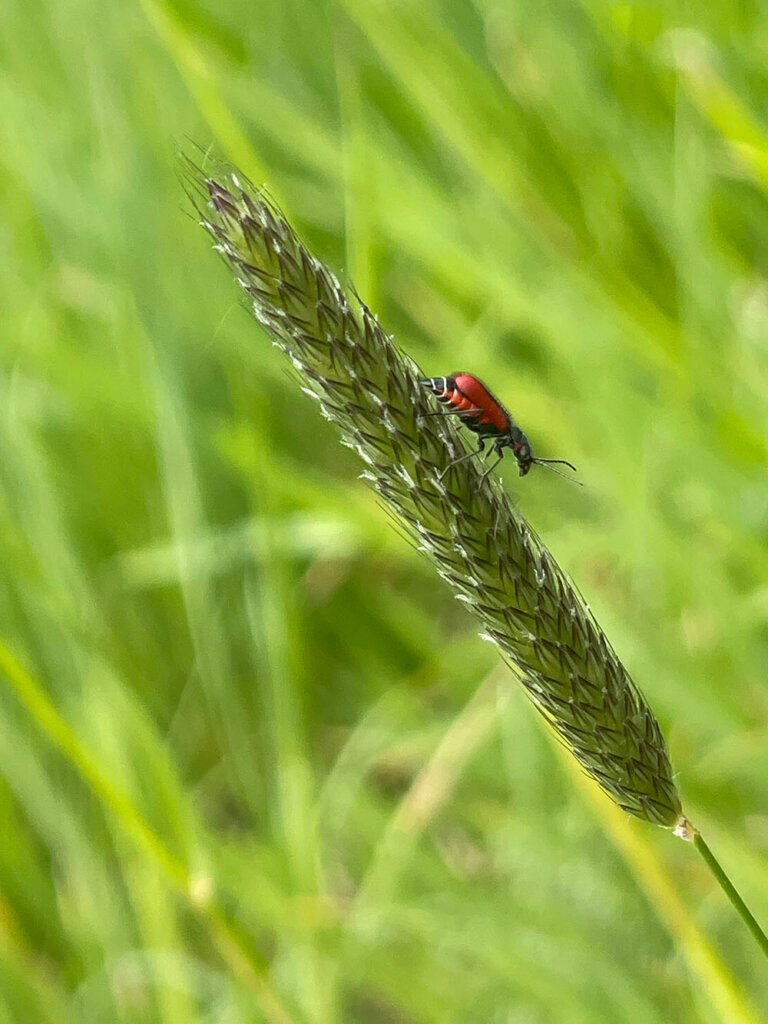
The female scarlet malachite beetle takes up a position head downwards on the grass head where she fattens up on pollen. The male alights on the grass stem beneath her. He has specialised antennae with lower sections that look like clips. On his forehead, is a gland that produces an intoxicating scent. He washes his face with this cologne and nods and bobs his head as he approaches the female. She awaits like a damsel at the top of the towering stem and she too bobs her head as he approaches.
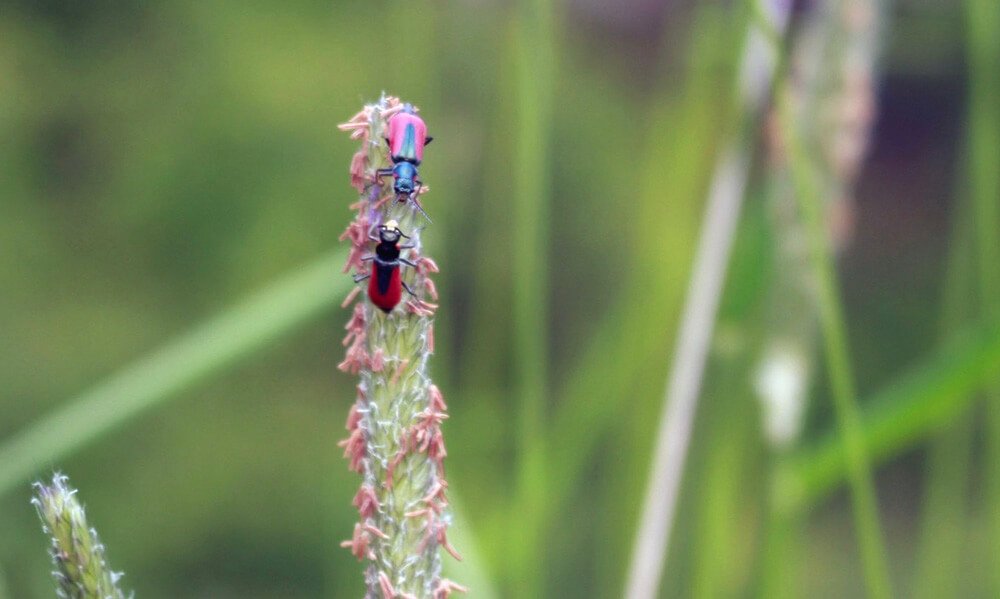
When he is close enough they bob their heads together and his antennal clips lock onto her antennae causing her to ‘kiss’ his forehead and taste the cologne (do not try this at home, I know from childhood that my Dad’s cologne did not taste anything like as nice as it smelled… yuck!). She then decides if he will make a suitable father and, if so, allows him to mate. Later she leaves the meadow to look for a thatchy substrate on which to lay her eggs.
Read more about the life of the scarlet malachite beetle.
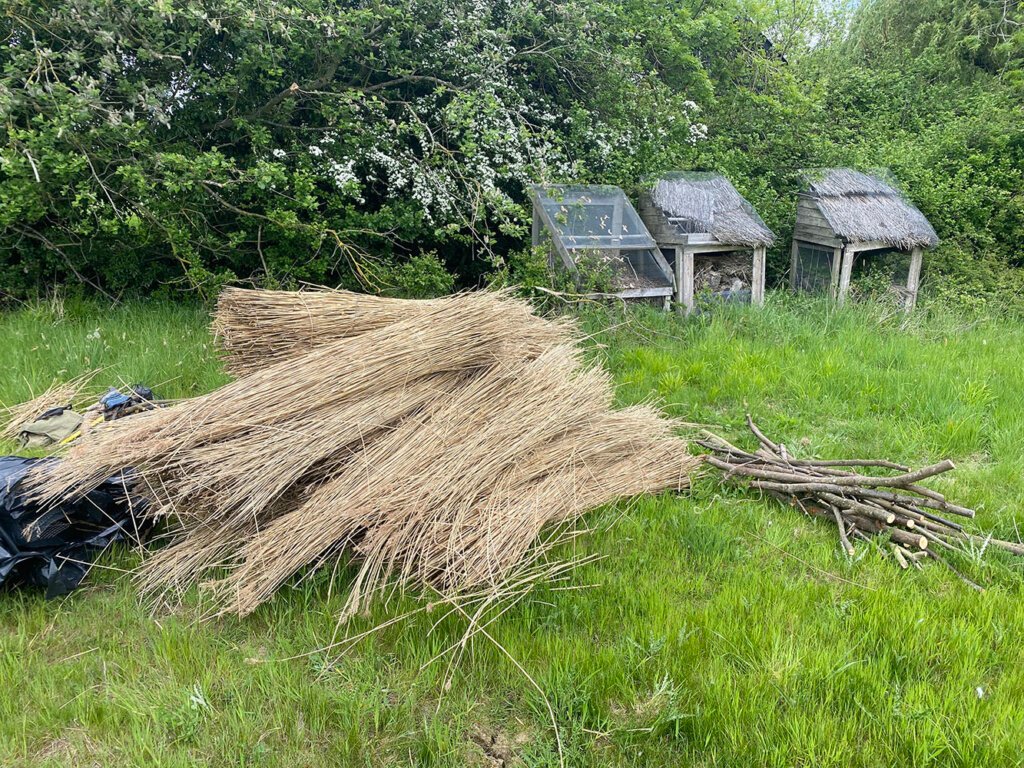
Cottages to save a beetle
We could not penetrate the thatch of nearby buildings to see if the beetle larvae were living in there. Having searched through soil samples, plant stems, leaf litter and vacuumed several lofts, we had exhausted all other possibilities so built mini thatched cottages in the hope the beetles would use them. Within a couple of months we opened one up and meadow owner Steph spotted a small pink wriggling ‘worm’. The only way to be sure it was a scarlet malachite beetle was to raise it to maturity and, lo and behold, we’d cracked it!
Having discovered that the beetle’s larvae live in thatch it may seem odd that this site, we’re so excited about, has no thatched buildings. Why would we choose such a site?
We have our concerns that treatments such as fire retardants and tanalised timbers repel or kill the beetles. Their preferred larval habitat is now potentially toxic to them. We know the beetles can grow to maturity in our ‘beetle nursery cottages’ and so we hope to start a population where the only thatch is our cottages.
At the turn of the year we got approval from Natural England and began to look for suitable materials. The cottages are about 1 metre square and nearly 2 metres tall with thatched roofs and packed full of thatch to provide the habitat the beetle grubs need.
Having successfully lured beetles to use our cottages, and bred them in captivity, the beetles themselves have taught us what to do next. Firstly, we will build cottages at one of the very few sites where the beetle’s survive. Then when the beetles have laid their eggs, we’ll move the thatch bundles to the new location. The hope is that this will found a new population.
Coming together to save a beetle
We live in West Wales but the beetles are in Essex. The land owners of this unique and secret site have given us permission to study the beetle for the past 13 years. Back here in Wales, the Wildlife Trust for South and West Wales gave us permission to collect reeds from their reserves to thatch and fill our cottages.
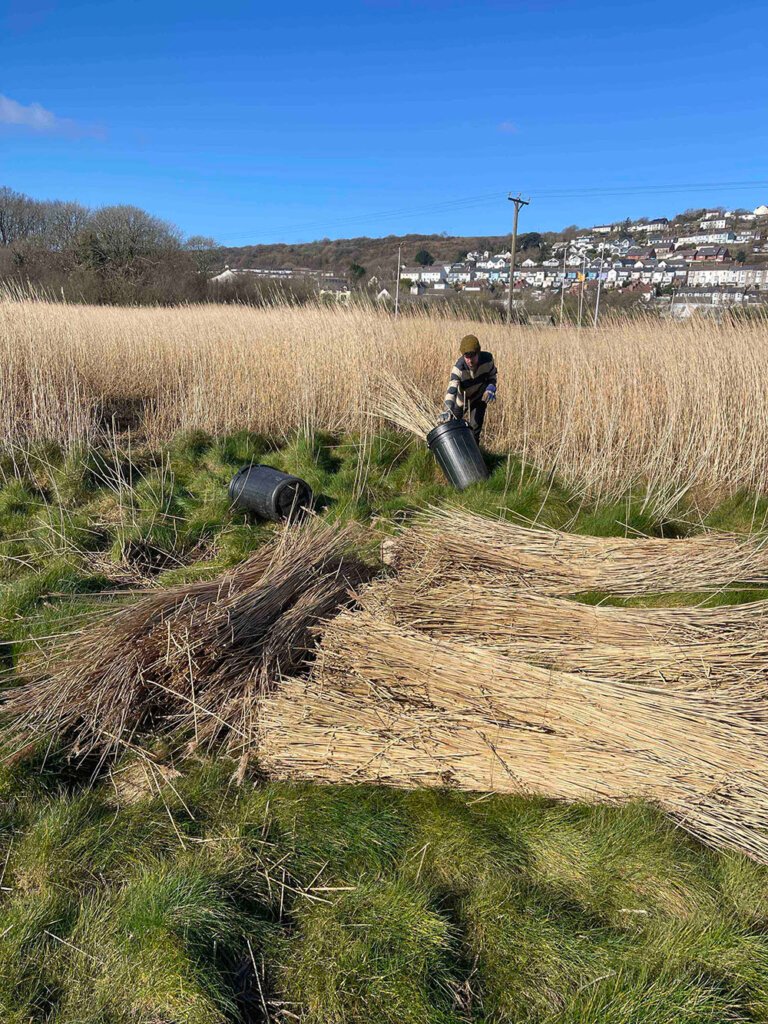
As we have only a family car and funds are tight, the Sea Trust at Goodwick offered temporary storage of the reeds. This allowed us to collect enough before birds start nesting and new reeds start growing. Then relay it from there to our base in Ceredigion and on to Essex, before the beetles started breeding in May.
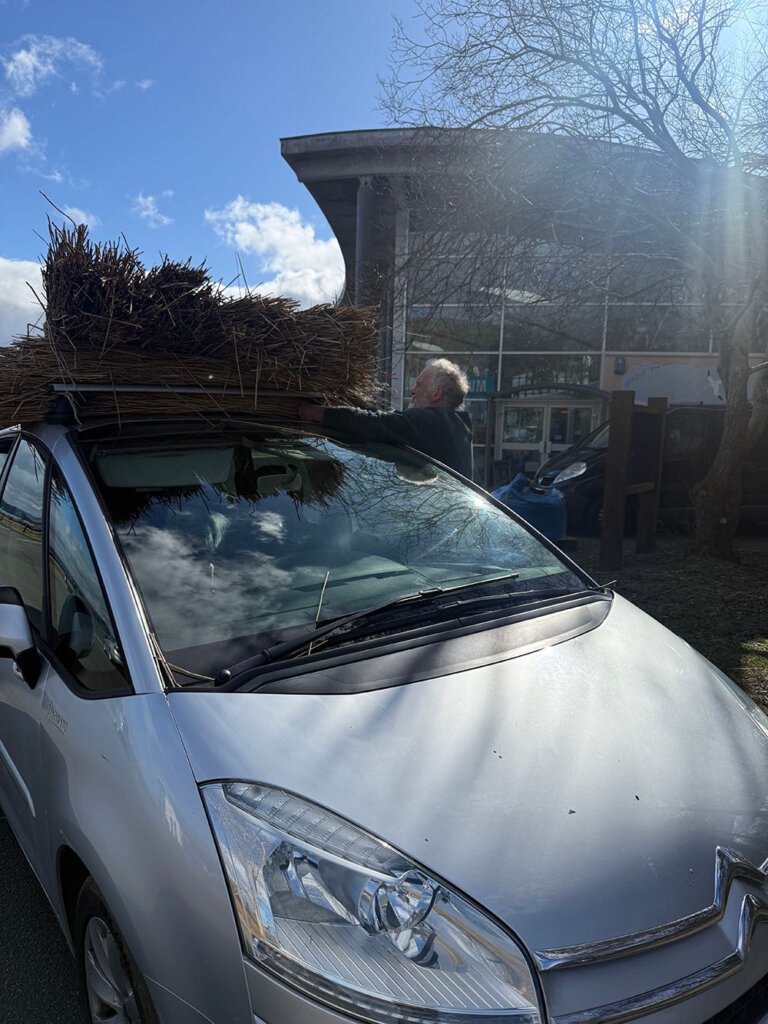
A car full of wood
We wanted to use untreated natural wood to build the cottages. Forestry England came to the rescue with sufficient coppice poles to build 6 cottages. Knowing our transport issues, the farmer who owns part of the study site also offered coppice poles, having previously created over an acre of habitat for the beetles and greatly increasing the prospects of conservation success.
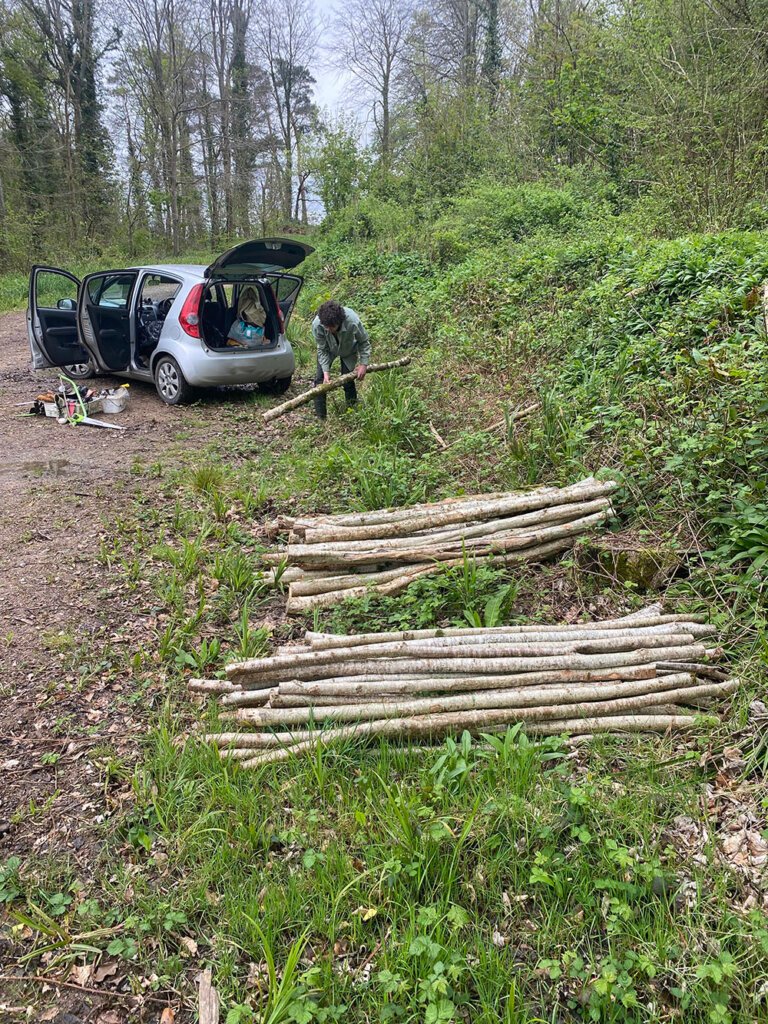
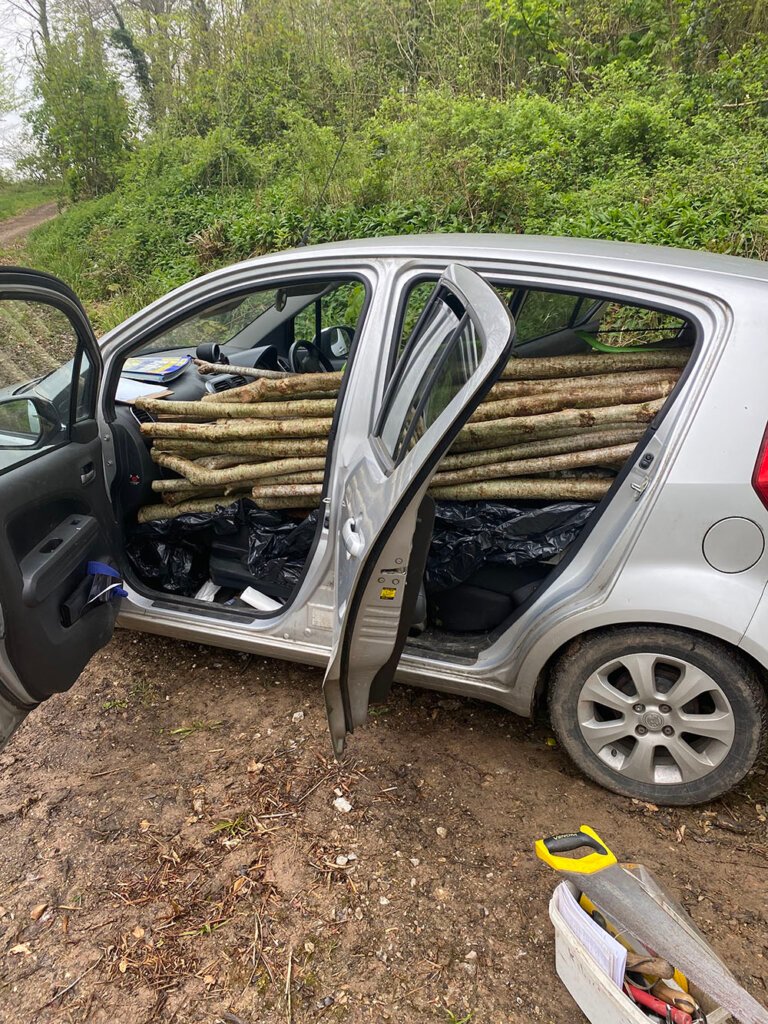
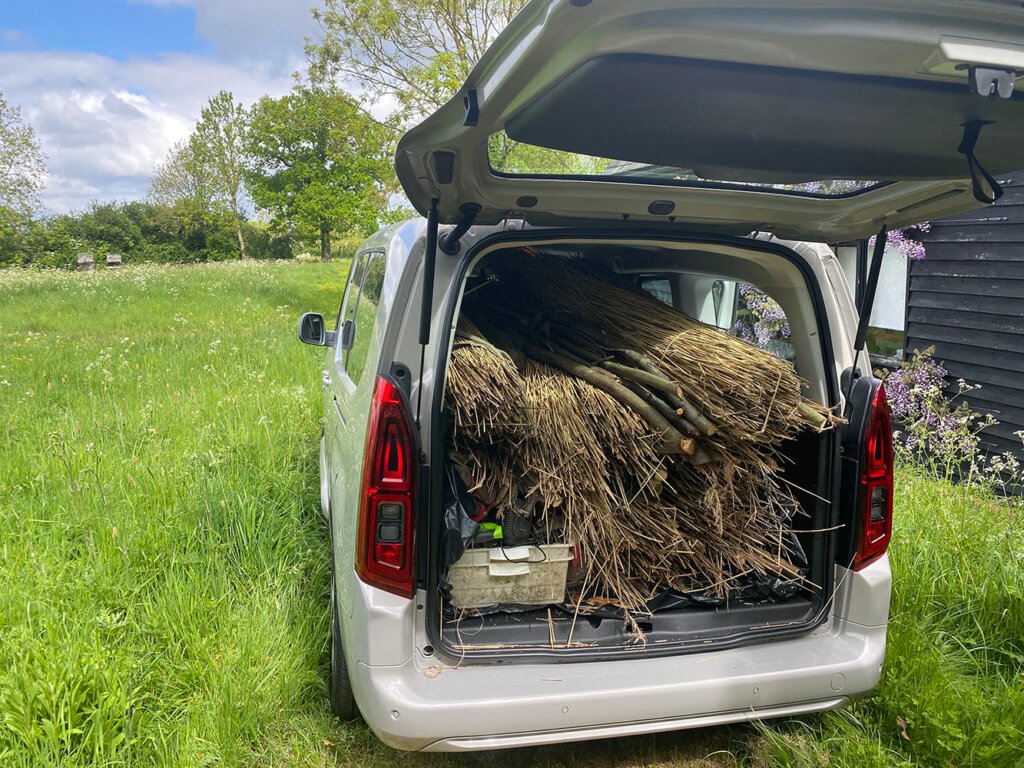
Additionally, a couple of years ago, a lady called Jilly who works for the Farming Wildlife Advisory Group (FWAG), discovered a hitherto unknown population of beetles where she lives. This is the only other population we know to be extant. Having seen our attempts she embarked on a thatching course. She has made her own beetle cottage and raised awareness with the Thatch Advice Centre. This marvellous group of people are also endeavouring to source old thatch removed by thatchers for us to use in cottages too.
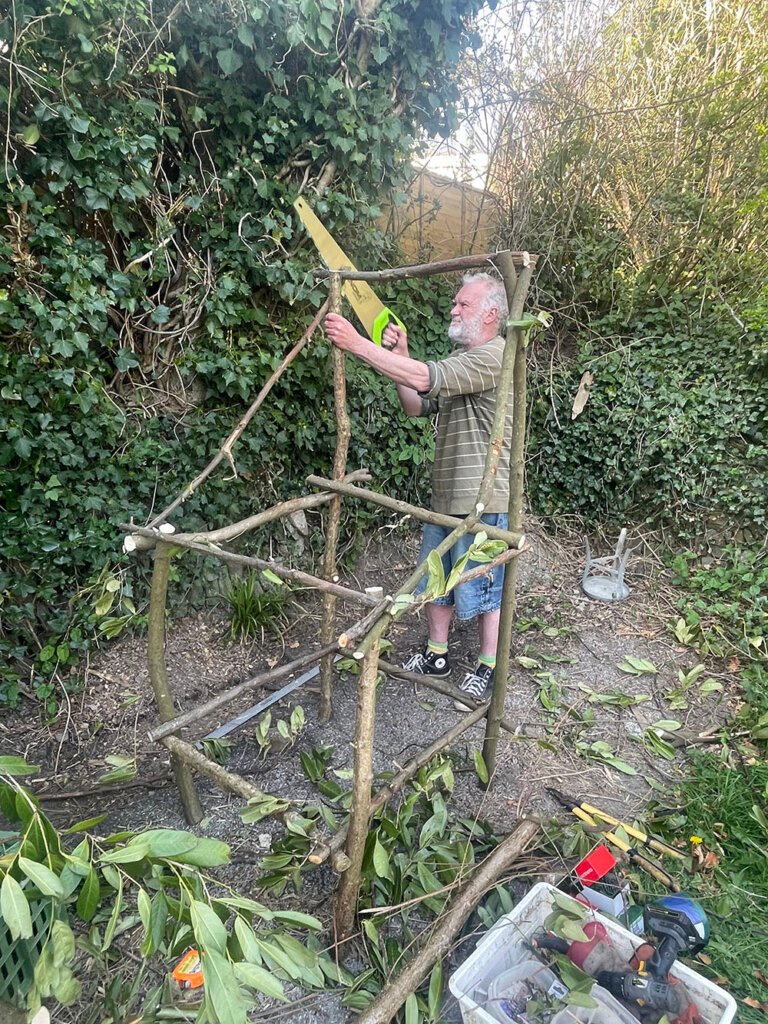

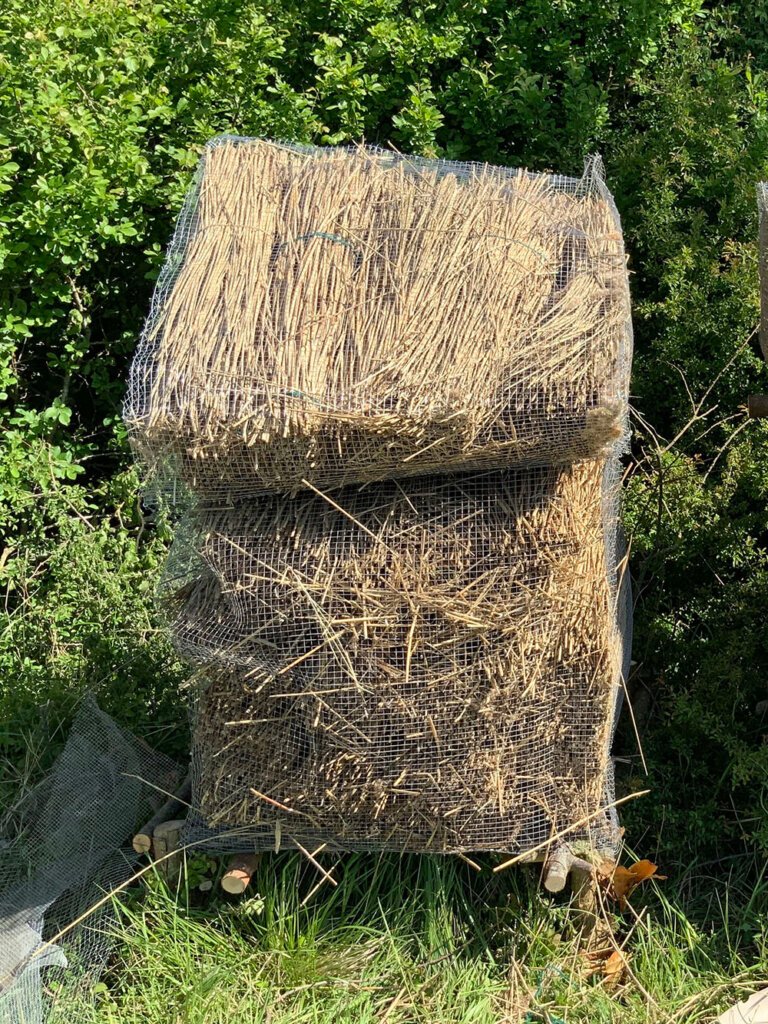
Saving a Beetle with help
This is heart-warming stuff involving co-operative conservation agencies, ecologists, good farmers, no, great farmers. And understanding and conscientious land owners and all for a beetle that most people have never heard of.
We do not know if this will work but just over a decade ago we knew nothing about this beetle or why it had disappeared from our countryside. The situation seemed hopeless but now there is hope and, if we can establish beetles on meadows where there are no thatched buildings, it will open up opportunities at many locations to bring back this lost gem. Such co-operative spirit gives me hope for many other species too and for finding fair solutions in troubled times.
If you’d like to help to save this beetle too, profits from our beetle products allow us to continue with this work – thank you.
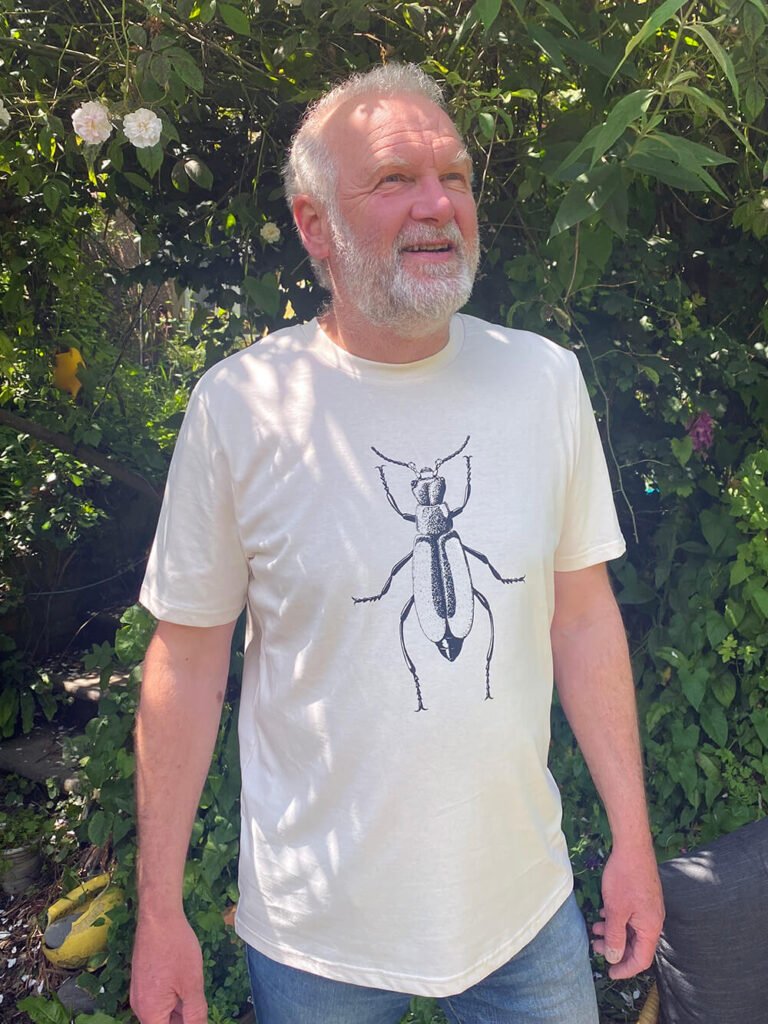

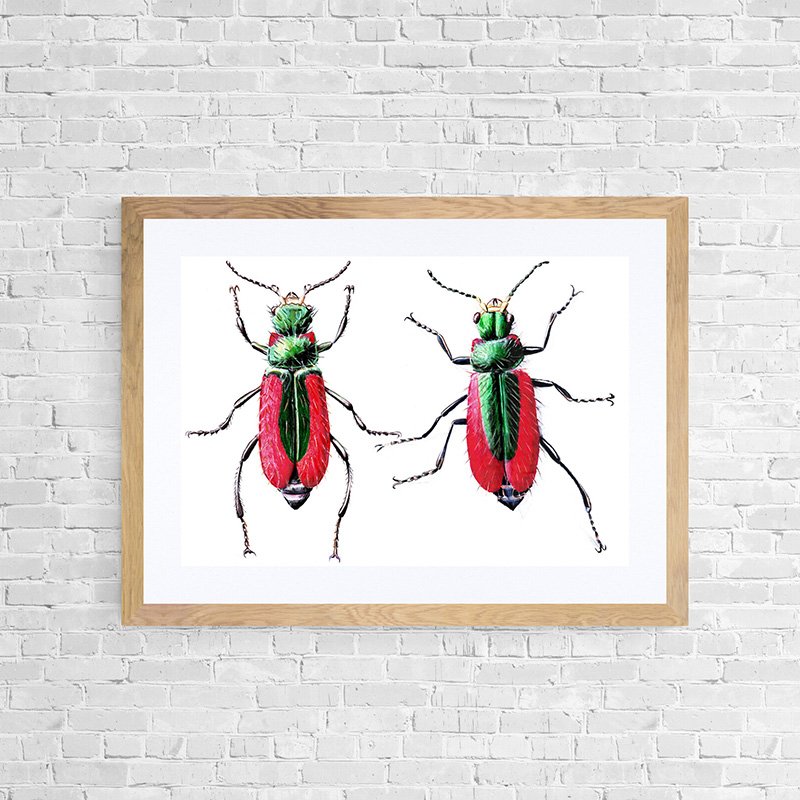
Thank you
Huge thank yous to everyone who has enabled this project to continue
- Forestry England
- New Forest Biodiversity Forum
- Sea Trust Wales
- Wildlife Trust for South and West Wales
- The Thatch Advice Centre
- The incredible land owners and others who are watching out for this beautiful beetle – you know who you are
- You! For taking the time to read this blog and for supporting our conservation work.


